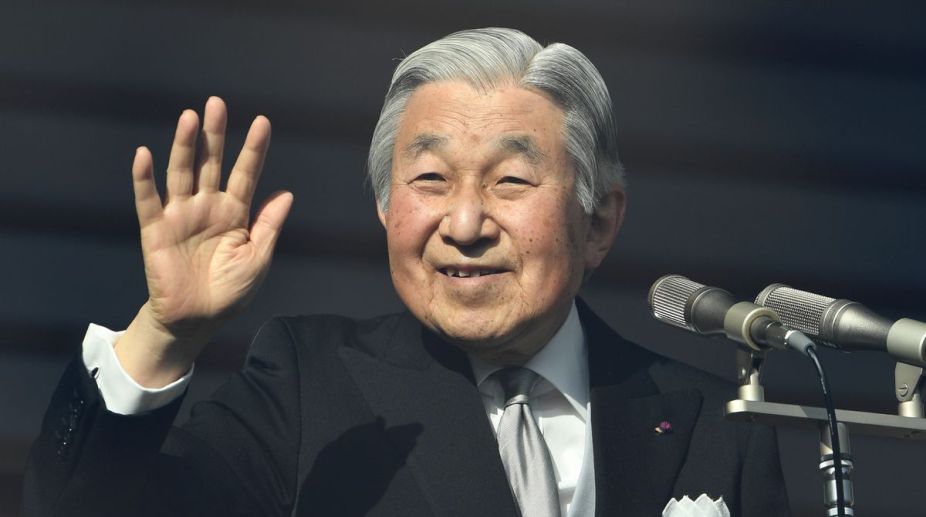PM lauds Japan’s commitment to ‘Make in India, Make for the World
PM Modi also highlighted the importance of enhanced cooperation in skill development, which remains a key pillar of India-Japan bilateral ties.

Emperor Akihito's
Japanese Prime Minister Shinzo Abe’s Cabinet on Friday formally approved April 30, 2019, as the abdication date for Emperor Akihito.
The Cabinet’s approval comes a week after a meeting of the Imperial House Council involving Abe, politicians, the judiciary and members of the Imperial family, agreed upon the date for the 83-year-old to step down after nearly three decades on the Chrysanthemum Throne, reports Xinhua news agency.
Advertisement
After the abdication, Akihito’s elder son Crown Prince Naruhito will ascend the throne on May 1, 2019.
Advertisement
A government body headed by Chief Cabinet Secretary Yoshihide Suga will be set up next year to prepare for ceremonies marking the succession.
The government is also expected to announce in mid-2018 the name of the new era, or “gengo”, which normally lasts throughout an emperor’s reign.
Akihito ascended the throne after the death of his father Hirohito in 1989, posthumously known as Emperor Showa.
He indicated his wish to relinquish and hand over the throne to the crown prince in a rare video message in August 2016, citing his old age.
In June, Japan’s parliament enacted a one-off law to allow Akihito to step down and pass his duties over to Naruhito.
The law, designed specially for the current emperor, would allow Akihito to be the first Japanese emperor who wilfully abdicates in about 200 years.
Advertisement